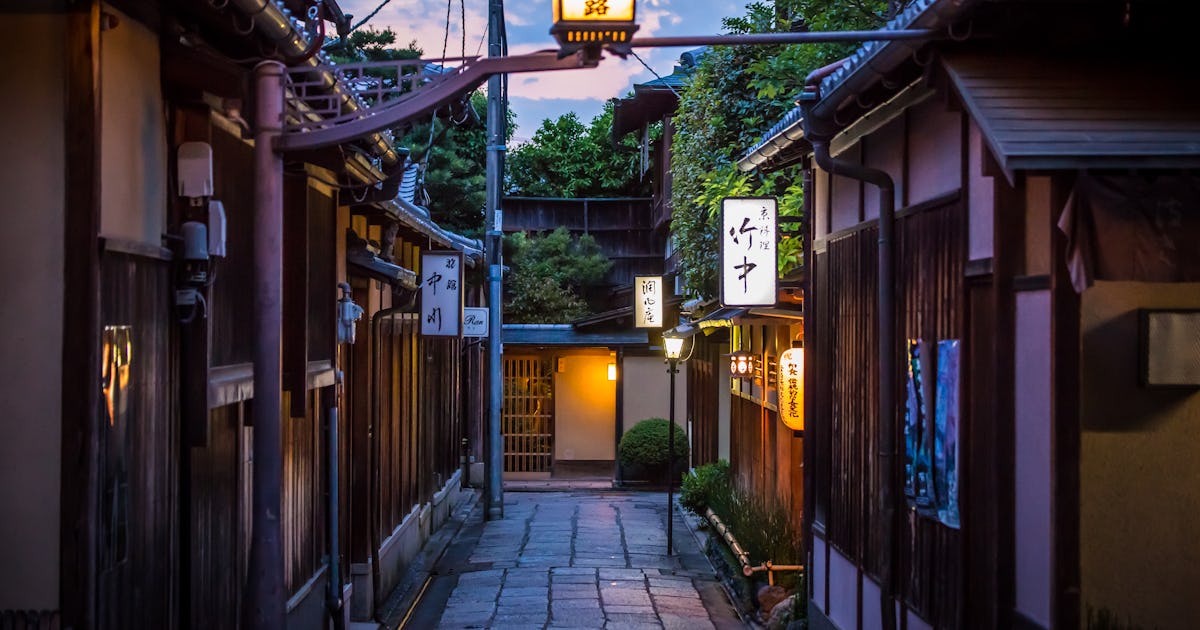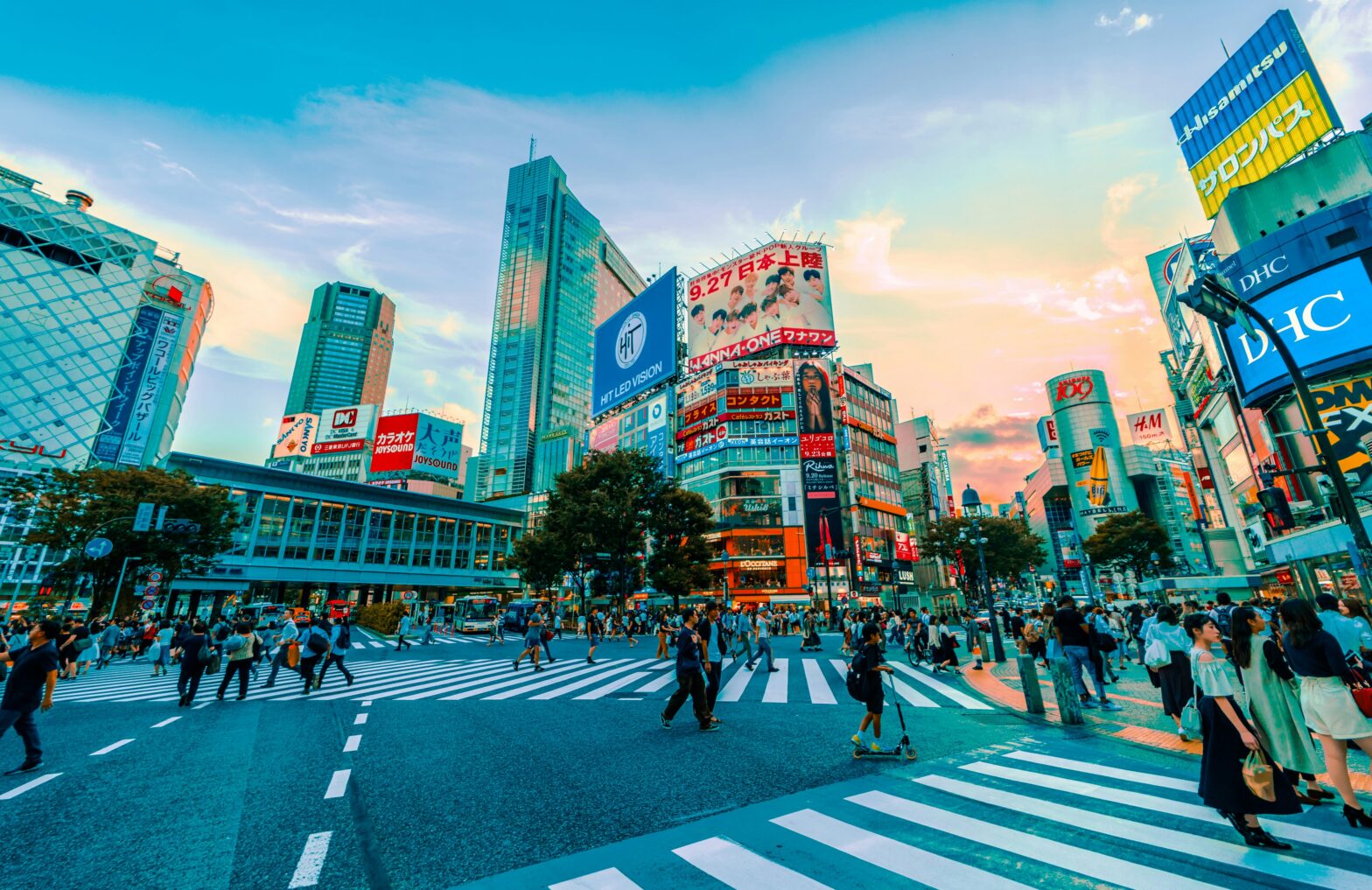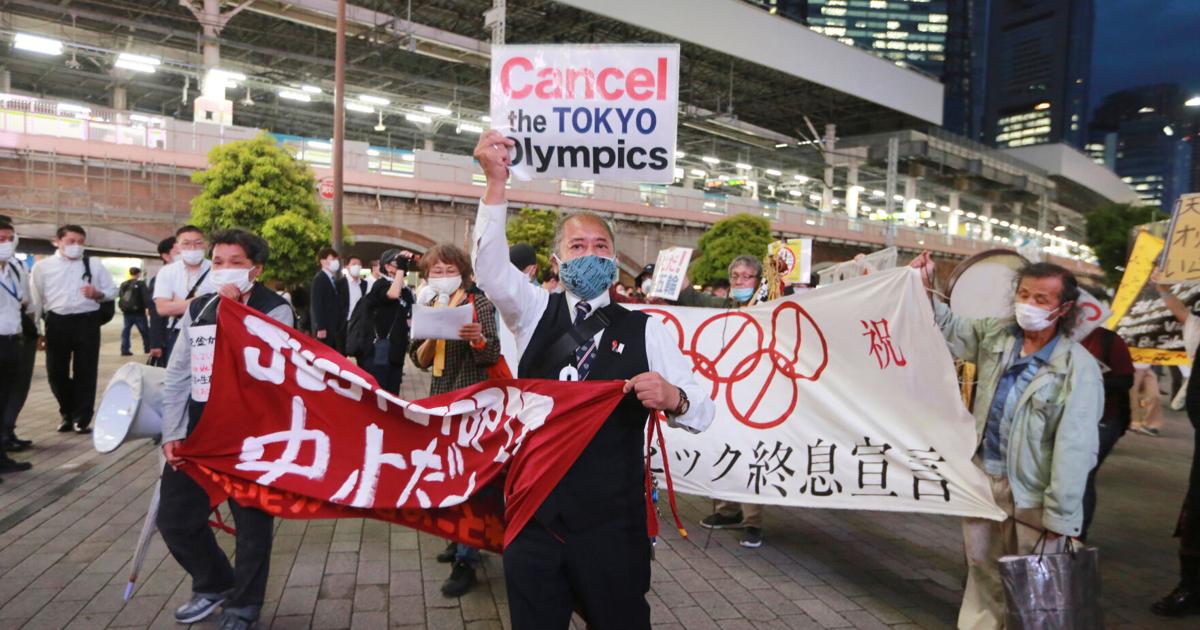
Ever wish you could text the most stylish people in the world to ask them for their lists of things to do in the places they know best? Here are insider travel tips for those who would never be caught dead in a tourist trap. Bon voyage!
Who
Originally the capital city of Japan, Kyoto is a both a beautifully preserved ancient city and a bustling metropolis filled with creative energy. To make the most of your visit, we tapped four local insiders for their expertise: Manabu Kusui and Misaki Hayakawa, the general manager and ambassador for Hotel the Mitsui, respectively; Sara Aiko, the founder of Curated Kyoto and SMerge Kyoto; and celebrity-favorite nail artist Mei Kawajiri, aka @nailsbymei, who is from Kyoto but is now based in NYC.
What
What to Bring
Fuss-free footwear should be top of mind—you’ll frequently be slipping your shoes off (and, in turn, back on). “In Japan, we take off our shoes before entering many indoor spaces, such as temples, tearooms, and most Japanese restaurants,” explains Aiko, who notes this tradition is both for cleanliness reasons and to distinguish a symbolic separation between the inside and outside worlds. “There’s nothing more awkward than trying to wrestle off knee-high Saint Laurent boots in a hurry—and in pain!—while the restaurant host politely waits beside you.”
In general, Aiko recommends bringing two to three shoe options, including something special for going out and no-fuss sneakers and/or flats for everyday. Hayakawa echoes this suggestion, pointing out that many of Kyoto’s historical sites require extensive walking to explore. “Wear comfortable shoes when visiting temples and shrines since there are many gravel paths and stairs,” she says.
What to Leave Behind
“I’d recommend avoiding low-cut tops,” says Sara. She explains that in Japan—in Kyoto, especially—it is uncommon to show cleavage, and it is often seen as disrespectful (particularly at one of the city’s many temples). “Interestingly, legs are a different story,” she notes. “You’ll often see women with their chest covered but their legs fully exposed.”
Kawajiri echoes this, and says to forgo “loud or attention-seeking” clothes on your trip. “Showing your body in naked-style clothes [in Kyoto] isn’t respectful,” she says. “The style is chic and well-dressed—nothing is too provocative.”
Something men can skip? Suit jackets. “[They aren’t] necessary for Michelin-star restaurants,” Aiko explains. “Locals opt for a nice shirt or sweater with slacks and clean shoes or sneakers—well-kept but not overly formal is the way to go.”
Where
Where to Stay
When it comes to a full-stop luxury experience, it doesn’t get better than Hotel the Mitsui—just ask the many A-listers who have stayed there as guests. Lavish, yet totally unpretentious, this centrally located hotel has everything you could possible want on-site: stunning Japanese gardens, onsen (traditional Japanese bath) services, and acclaimed restaurants. However, points out Hayakawa, it also sets itself apart by way of deep connections to the city’s cultural scene; guests can arrange one-of-a-kind experiences during their stay, like a traditional Japanese whiskey tasting or a pottery class. “Guests can also enjoy an exclusive kimono experience in collaboration with Hosoo, a renowned kimono curator established in Kyoto in 1688,” she says.
Aiko also suggests The Shinmonzen, an intimate option in the heart of the iconic Gion neighborhood (famed for being the home to the city’s geishas). “It has exquisitely designed rooms adorned with stunning artwork,” she raves. “Their service is warm and personalized—every time I visit, they greet me with my favorite matcha or coffee.” Her biggest tip? “With only nine rooms, it’s a good idea to book in advance!”
Where to Eat & Drink
Aiko recommends beginning your day at the charming Good Good Not Bad, especially if you are an early riser. “It’s open [first thing] in the morning, which is rare,” she says. “They also serve matcha!”
For a quick bite, Kawajiri loves Little Stone for its fresh baked goods: “I personally think Japanese bakeries are much better than Paris,” she says.
For a more traditional breakfast experience, Hayakawa points to Shunsai Imari, available by reservation only. “The sight of rice cooked in a pot with small bowls of obanzai (traditional side dishes) arranged on a tray makes for an elegant start to the day,” she says.
As for lunch, Aiko loves Tenyu, a tempura restaurant at a famous ryokan (traditional Japanese inn). “Order the omakase tempura,” she advises. But you don’t want to leave the city without trying some ramen, says Hayakawa—she points to Daiichi Asahi as an authentic Kyoto-style option. And if you’re looking for some good Western-style comfort food, Kusui says that Forni at Hotel the Mitsui has some of the most delicious pizza in town.
Whether you’re staying at Hotel the Mitsui or not, it’s worth booking a table at the hotel’s Toki restaurant, which is helmed by chef Tetsuya Asano, Japan’s representative for the Bocuse d’Or 2027 International Culinary Competition. “The menu showcases a harmonious blend of Kyoto-sourced ingredients and French cuisine, with fond—a rich, flavorful soup stock crafted using Kyoto’s pristine water—taking center stage,” Kusui says. However, if you haven’t had time to make a reservation, Aiko says that it’s pretty easy to get a table at Tonkatsu Shimizu and it serves the most “succulent tonkatsu [breaded cutlet] sandwiches.”
Ready for a post-dinner cocktail? “Kyoto’s bar culture is all about intimacy, with many owners cultivating a private and exclusive vibe,” says Aiko. “While I usually keep the smaller spots a secret, Jazz Spot Yamatoya is a special gem I’m happy to recommend.” Kusui chimes in that Kyoto Samboa is also excellent for a traditional bar experience, whereas you’ll find a more international vibe at Bee’s Knees—but, really, you can’t go wrong with either place.
Where to Shop
According to Hayakawa, you should start your shopping exertion in downtown area of Kawaramachi, the city’s biggest retail district. “It has shopping malls, department stores, and thrift shops all in one place,” she says. “Particularly, Teramachi Street and Shinkyogoku are well-known for their antique shops, where you can discover traditional items like kimonos and accessories.” Kawajiri, who also loves this area for its secondhand boutiques, adds that one of her favorite spots is in the nearby Gion neighborhood: Gion Naito, which offers traditional geta sandals.
Shinkyogoku Shopping Arcade in Kyoto, Japan
Getty
And Aiko says it’s also worth a trip to the Sakyo Ward to visit Essence Kyoto. “It has a beautiful selection of interior pieces—the perfect place for gifts,” she says.
Where to Enjoy Art & Culture
“My top recommendation is UNESCO World Heritage Site Nijō Castle,” says Hayakawa, who calls out the historic site for offering a glimpse into the life and power structures of 17th-century Japan. “The highlight is Ninomaru Palace. Its luxurious rooms, adorned with wall paintings and gold leaf decorations, leave a strong impression.”
She also suggests making time for Mikane Shrine, which is said to bring visitors financial luck, and the Shinsen-en garden, dating back to the Heian Period (794–1185). “Originally a recreational spot for emperors and nobles, it offers a serene and tranquil atmosphere,” she says. “With relatively few tourists, it is an ideal spot to spend a quiet, peaceful moment.”
Art-wise, Aiko is a huge fan of Kawai Kanjiro, the former home-turned-musuem of late Japanese artist Kawai Kanjiro: “It’s a small space packed with creativity.” She also notes that Taka Ishii Gallery is a beautiful and modern space in which to soak up contemporary paintings.
Kawajiri’s top pick is Toei Studio Park, a theme park where the public can observe the shooting of period films (about 200 movies are shot there per year) and enjoy interactive experiences, like walking through a “ninja mystery” house. “They have a really amazing giant EVA-01 from Neon Genesis Evangelion [anime series] you cannot miss,” she says.
When
Fall and spring tend to be the busiest time for tourists, and for good reason. “The stunning foliage and crisp, clear air make autumn a particularly special time in Kyoto,” explains Hayakawa. “Additionally, many restaurants, especially those serving kaiseki or obanzai cuisine, focus on seasonal ingredients like matsutake mushrooms in early autumn and fugu or crab later in the season.” March and April, meanwhile, are cherry blossom season and the city is alight with festivals and special tours.
That said, there is a case to be made for visiting slightly off-season. “My favorite time is late summer to early autumn, around September and early October,” Aiko says. “The air is crisp and romantic, and you can stroll around the city for hours without getting too hot or cold. And since it’s not peak season, hotel prices are much kinder to your wallet.” Kusui, on the other hand, loves the period that comes right after the cherry blossoms fall from the trees in late spring. “The city comes alive with vibrant shades of green, creating a breathtakingly serene atmosphere,” he says. “I highly recommend visiting Kyoto during this time to experience its unique beauty.”
Why
One of Kusui’s favorite things about his hometown is its manageable size. “It is an absolutely beautiful compact city, making it easy to explore,” he says, pointing out the amazing culinary options don’t hurt either. “The quality of food here is exceptional, offering an elevated experience that truly stands out.”
For Aiko, the city’s charm is in its melting pot of culture. “Kyoto is a city where creativity, culture, and heritage flow seamlessly,” she says. “There’s a deliberate intention behind bringing beauty and harmony into everyday life: You can see this in the decor of a restaurant, a craftsman collaborating with a graphic artist, or even at a gathering where you might find a monk, a hip-hop MC, a bonsai artist, and a wine sommelier all sharing the same space.” As Kawajiri puts it: “Kyoto is a sacred, respected, and traditional part of Japan’s roots.”
This article was originally published on
link






